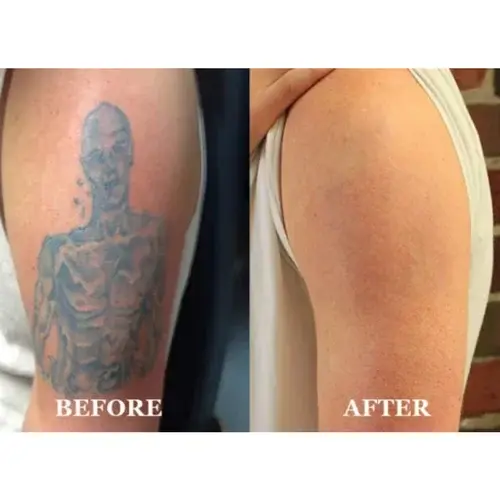The Evolution of Tattoos: How Magnetic and Biomechanical Ink is Changing the Game
Introduction
Brief History of Tattoos: From Ancient Cultural Symbols to Modern Body Art
Body art is evolving due to magnetic and biomechanical ink, which offers a technological future of self-expression and function. Tattoos have been a way for individuals to express their identity for millennia, from ancient civilizations’ tribal marks to today’s elaborate tattoos. With recent advances in magnetic biomechanical ink, however, tattoos have the potential to become more than just a physical expression, combining cutting-edge function and interactivity
- Ancient Origins: The first tattoo evidence can be found on the famous Ötzi the Iceman, who had designs etched on his skin using carbon-based ink more than 5,000 years ago. In many cultures, tattoos were a status symbol, a sign of spirituality, and a sign of protection.
- Religious and Cultural Significance: Tattoos were used as spiritual markings and rites of passage by Native American, Japanese, and Polynesian tribes.
- Modern Popularity: With the rise of tattoo machines in the 19th century, tattoos became widely accessible and evolved from counterculture rebellion to mainstream fashion statement.
Role of Technology in Evolution of Tattoos
The tattoo industry has moved away from traditional hand-applied inks to high-tech tattooing innovations. Advances in ink formulation, laser tattoo removal, and 3D tattoo design have opened up new possibilities.
These days, magnetic and biomechanical ink tattoos are being made possible by advanced biotechnology and nanotechnology, which is a groundbreaking development that blends style and utility.
Introducing the Latest Advancements: Magnetic and Biomechanical Inks
- Magnetic ink tattoos: Use ferromagnetic materials to create interactive tattoos that can respond to magnetic fields and control devices or even display movement.
- Biomechanical ink tattoos: Designed to integrate with the body and allow tattoos to monitor health conditions and regulate body temperature and or provide biofeedback.
These next-generation tattoos are set to redefine body art and combine beauty with smart technology.
The Traditional Tattooing Process
Overview of How Traditional Tattoos Work (Ink Needles and Healing Process)
Traditional tattoos involve ink being inserted with a needle into the dermis, the second layer of skin. The body’s immune response traps the ink particles, creating a permanent design.
The healing process includes:
- Initial inflammation : redness and swelling after a tattoo session.
- Peeling and scaling : as the skin regenerates, it sheds dead cells.
- Full healing (2-4 weeks): the ink hardens and the final color of the tattoo emerges.
Common types of tattoo inks and their limitations
Traditional tattoo inks include carbon based organic and synthetic pigments. However these also have drawbacks:
- Limited functionality : tattoos are purely decorative.
- Fading over time : sun exposure and aging of the skin can cause the ink to fade.
- Risk of allergic reactions : some synthetic colors can cause skin irritation.
Permanence and risks associated with traditional tattoos
Once a tattoo is inked, it is lifelong unless it is removed through painful and expensive laser removal treatments. Risks include:
- Infection from unsanitary needles.
- Allergies to ink ingredients.
- Regret and social stigma in some cultures or workplaces.
In this sense, magnetic and biomechanical ink tattoos provide a revolutionary alternative with their interactive, detachable, and intelligent ink features.
Read also:
What is Magnetic Ink?
An overview of how magnetic ink works
Magnetic ink tattoos use ferromagnetic nanoparticles that respond to magnetic fields. These tattoos can be invisible unless activated by an external magnet or sensor.
Use of ferromagnetic particles in ink
- Metallic nanoparticles create a magnet-responsive ink.
- Smart ink interactions enable features such as motion-based designs, conductive properties and data transmission.
Interactive and functional uses
- Controlling smart devices: Imagine unlocking your phone or turning on a light with a simple wave of your tattooed hand
- Wearable technology replacement: Magnetic ink tattoos could replace fitness trackers by detecting changes in blood flow motion or pressure.
- Medical applications: Scientists are exploring magnetic ink for real-time health monitoring.
Potential health and safety concerns
- Metal sensitivity risk : some users may react to ferromagnetic particles.
- Limited long-term studies : More research is needed on how magnetic tattoos affect the body over decades.
- Regulatory hurdles : Governments may require strict approval for medical-grade inks.
The rise of biomechanical inks
What makes biomechanical inks different from traditional inks?
Biomechanical inks incorporate biocompatible materials that interact with the body. Unlike static inks, biomechanical ink tattoos change or react according to physical changes.
How it interacts with the body
- Temperature-sensitive ink: Changes color based on body heat.
- Biofeedback tattoos: Monitor hydration levels, glucose, or blood pressure.
- Mood-based tattoos: React to stress levels by changing colors.
Potential applications in the medical and wearable tech industries
- Diabetes monitoring: Tattoos that track blood sugar levels.
- Athlete performance tracking: Biomechanical ink tattoos that detect dehydration.
- Emergency health alerts: Tattoos that indicate medical conditions such as epilepsy.
Biomechanical tattoos blur the line between art and health technology, providing functional aesthetic and life-saving benefits.
How these innovations are changing the tattoo industry
Combining body art with technology
With tattoos with magnetic and biomechanical inks tattoos are no longer just decorative; they are becoming interactive and functional.
How magnetic and biomechanical inks could redefine the aesthetics and functionality of tattoos
- Personalized bio tattoos that adapt to changes in your mood and body.
- Augmented reality (AR) tattoos that interact with smartphones or VR systems.
- Tattoos with medical benefits reducing reliance on external wearable technology.
The future of tattoos: temporary vs. permanent smart tattoos
- Removable smart ink for temporary tattoos with dynamic features.
- Long-lasting ink for permanent tattoos with continued functionality.
This could transform the tattoo industry into a high-tech and bio to integrated art form.
Focus Keyword not found in the URL.
Ethical and health considerations
Safety concerns and regulatory challenges
- FDA and medical regulations on implantable and bioreactive inks.
- Long-term studies of health effects are still required.
Potential impact on body autonomy and privacy
- Could collecting data on tattoos be a risk to privacy?
- Should tech companies regulate the functions of tattoos?
The debate on tattoos as art vs. functional body modification
- Are tattoos meant to remain artistic only?
- Or should they evolve into smart skin enhancements?
Conclusion
- Tattoos have evolved from tribal traditions to the biotech inks of the future.
- Magnetic and biomechanical inks for tattoos have the potential to revolutionize how we use technology and our bodies.
- Tattoos have much more in store for the future than just superficial appeal, regardless of whether this is a passing fad or a ground-breaking innovation.






